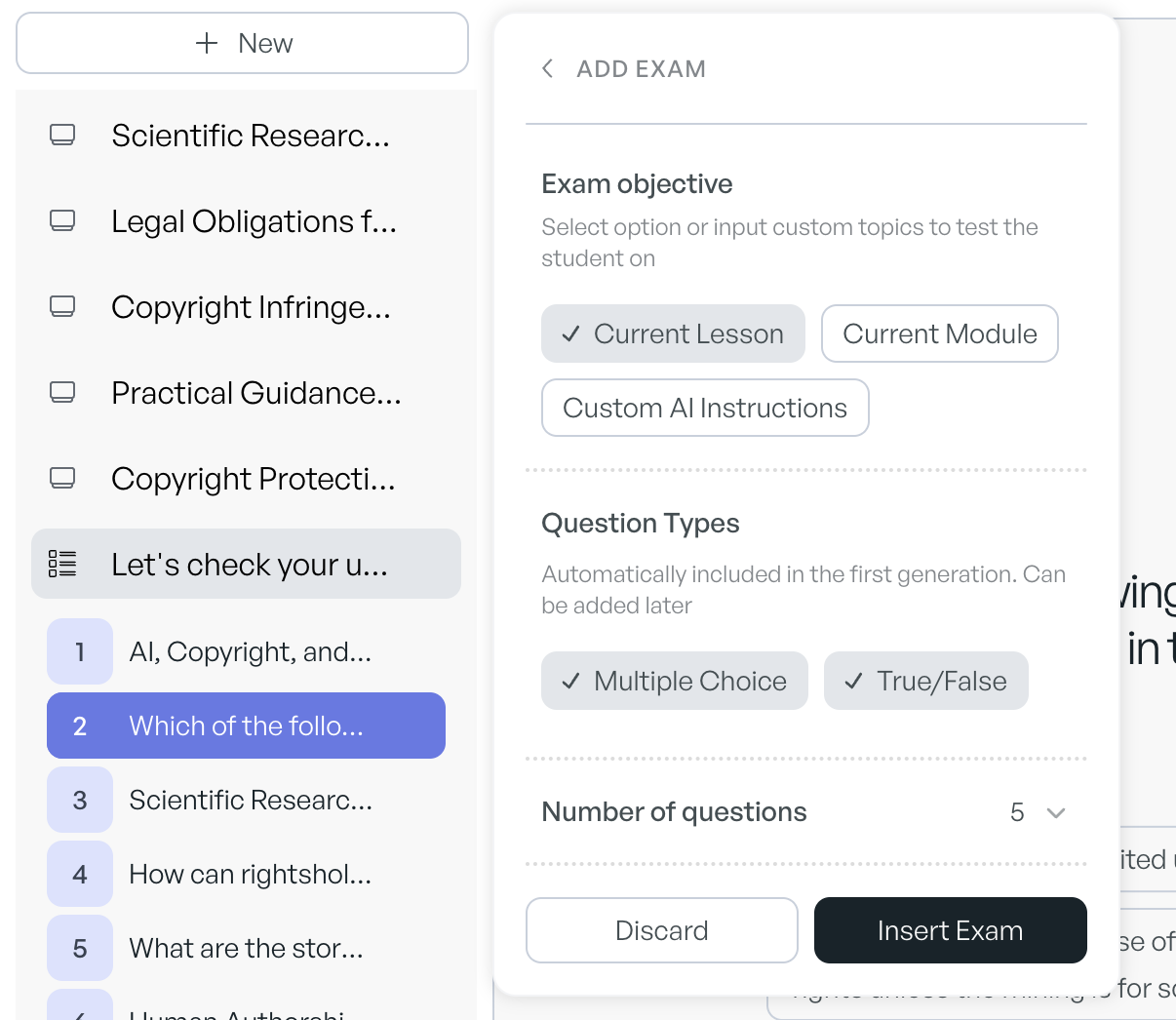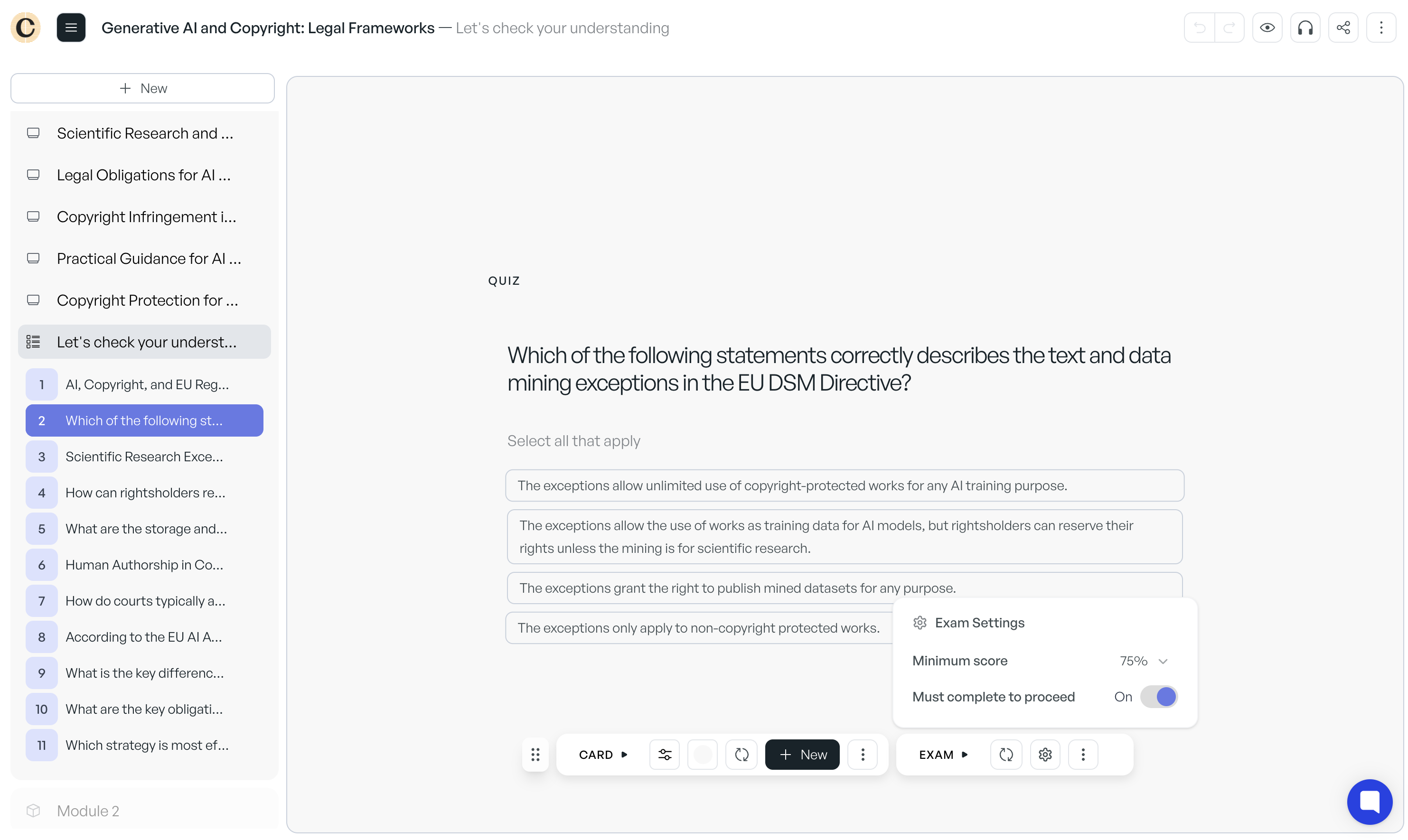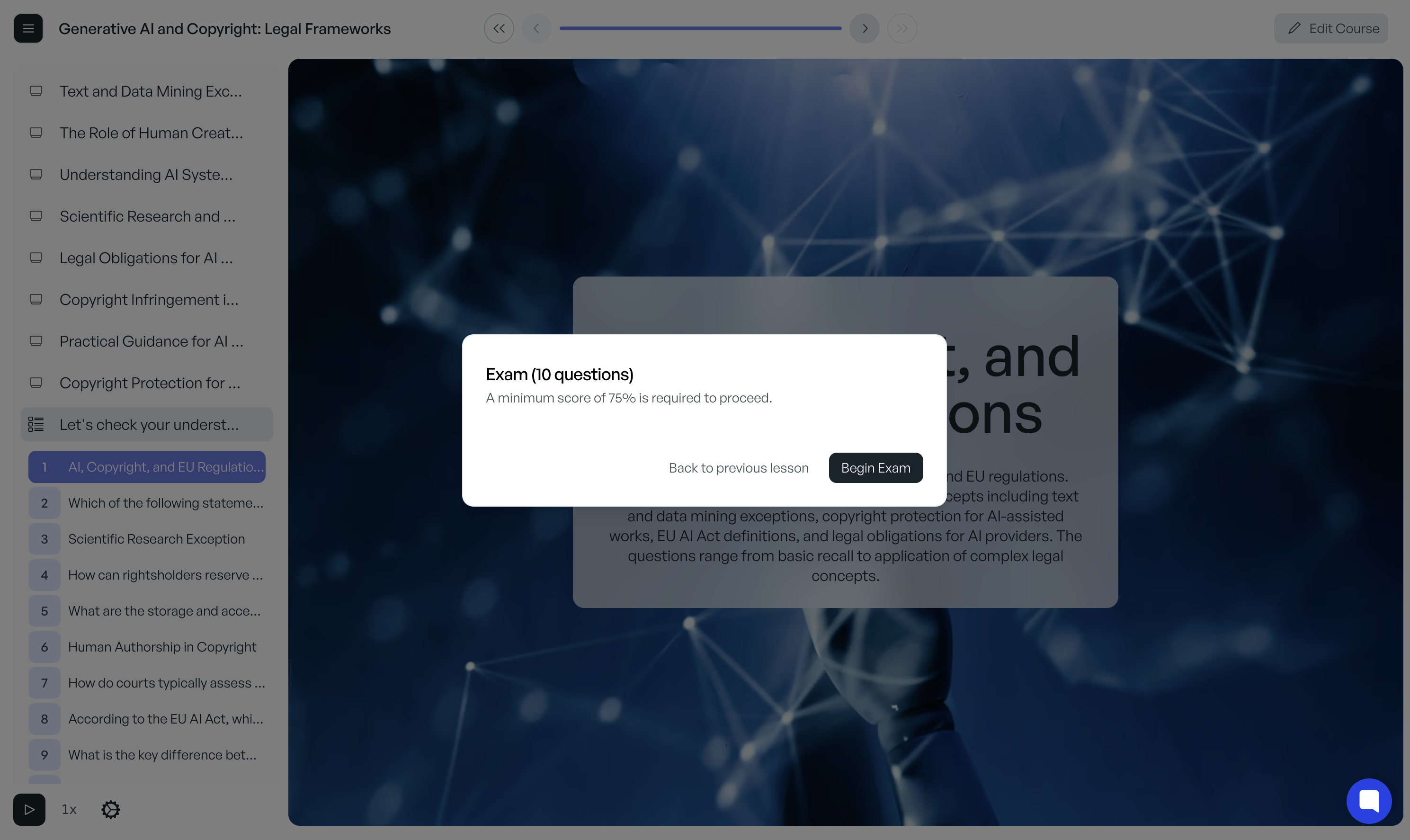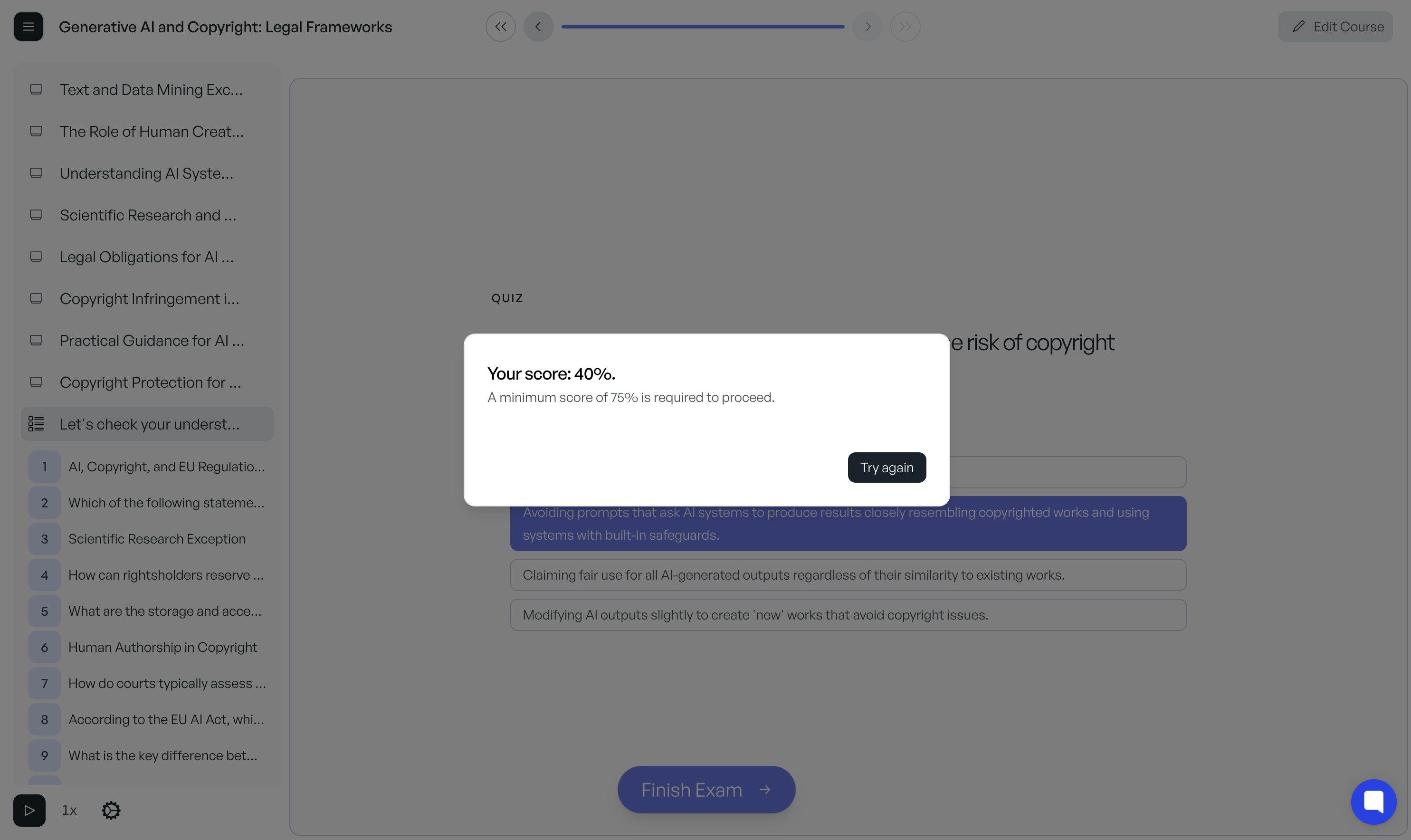In your course editor, navigate to where you want to add the exam
Click the "+" or "Add New" button

Select "Exam"
Configure the exam parameters:

Exam Objective:
Current Lesson: Tests material from the currently selected lesson
Current Module: Tests material from the currently selected module (or entire course if no modules)
Custom AI Instructions: Provide specific instructions about which topics or learning outcomes to test
Question Types:
Multiple Choice: Questions with several possible answers
True/False: Statements to identify as true or false
Number of Questions: Select between 1-10 questions

Access settings through the floating menu when editing an exam:

Set the percentage of questions learners must answer correctly to pass (0-100%)
Default is 60%
Recommended thresholds:
Higher scores (80%+) for critical knowledge
Moderate scores (60-70%) for general comprehension
Lower scores for introductory material
When this setting is enabled, learners:
can not navigate away once they start the exam
can not proceed to lessons that are located after an exam marked as must complete
When disabled, learners can proceed regardless of their score and can exit the exam if needed
Best practice: Enable for critical knowledge checkpoints, disable for optional assessments
When a learner encounters an exam:
Introduction Screen shows:
Number of questions
Minimum score required
Options to begin or return to previous lesson

During the Exam:
Progress indicator appears at the top
Questions are presented sequentially
Learners select answers and proceed through all questions
After Completion:
If passed: Success message with score and options to review or continue
If failed: Score display with minimum required and option to retry

Place exams strategically after important concepts or before advancing to complex topics
Create multiple shorter exams rather than one long exam to improve learner experience and retention
Vary question types to test different aspects of understanding
Write clear, unambiguous questions that directly relate to learning objectives
Set appropriate difficulty levels based on audience and course goals
Review generated questions to ensure accuracy and relevance
Remember that changing exam questions will reset learner progress